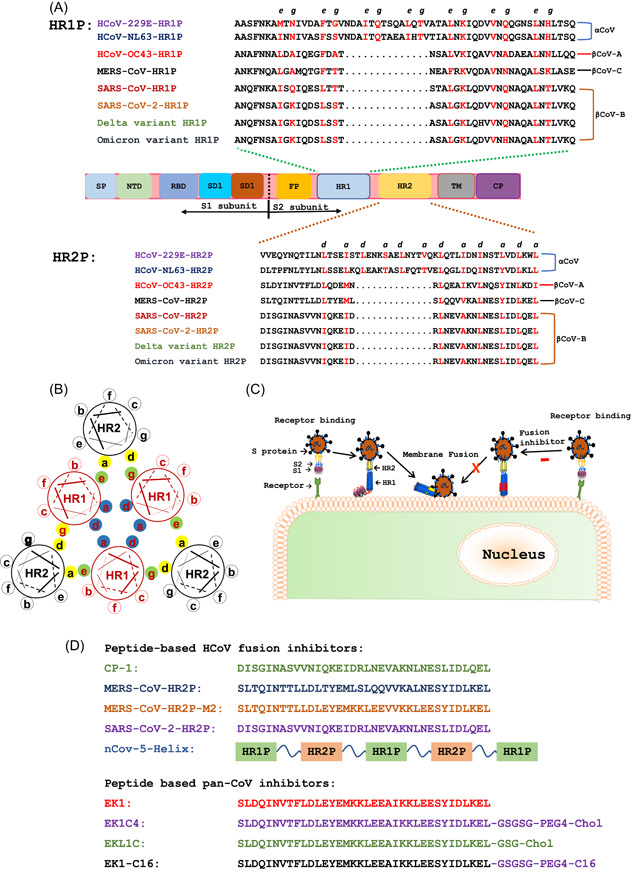Figure 1.

Sequences of peptides derived from the HR1 and HR2 domains and pan‐CoV fusion inhibitors and their mechanisms of action. (A) Functional domains of human CoV S protein and peptides derived from the HR1 and HR2 domains. Spike protein consists of the S1 and S2 subunits. Signal peptide (SP), N‐terminal domain (NTD), receptor‐binding domain (RBD), and subdomains 1 and 2 (SD1 and SD2) are located in the S1 subunit. Fusion peptide (FP), heptad repeat 1 (HR1), heptad repeat 2 (HR2), transmembrane region (TM), and cytoplasmic domain (CP) are located in the S2 subunit. Key amino acid residues at the e and g sites in the HR1 and a and d positions in the HR2‐helical wheels responsible for HR1−HR2 interaction are shown in red. (B) Key amino acid residues involved in the interaction between HR1 and HR2 helices to form 6‐HB. Residues located at the a and d positions in one HR1 helical wheel (shown as blue shadow) interact with those at the d and a positions in another HR1 helical wheel, respectively, to form an internal trimer, while the residues at e and g positions (green shadow) interact with those at a and d positions (yellow shadow) in the HR2 helices to form 6‐HB. (C) Viral fusion and entry mediated by S protein and the mechanism of action of pan‐CoV fusion inhibitors. The viral entry of HCoVs is initiated by binding of RBD in the S1 subunit to the receptor on the host cell, followed by 6‐HB formation via HR1−HR2 interaction of HR1 and HR2 domains in the S2 subunit. Pan‐CoV fusion inhibitors can inhibit viral fusion with and entry into the host cell. (D) Sequences of peptides and lipopeptides with pan‐CoV fusion inhibitory activity. HCoVs, human coronaviruses; pan‐CoV, pan‐coronavirus; 6‐HB, six‐helix bundle.
